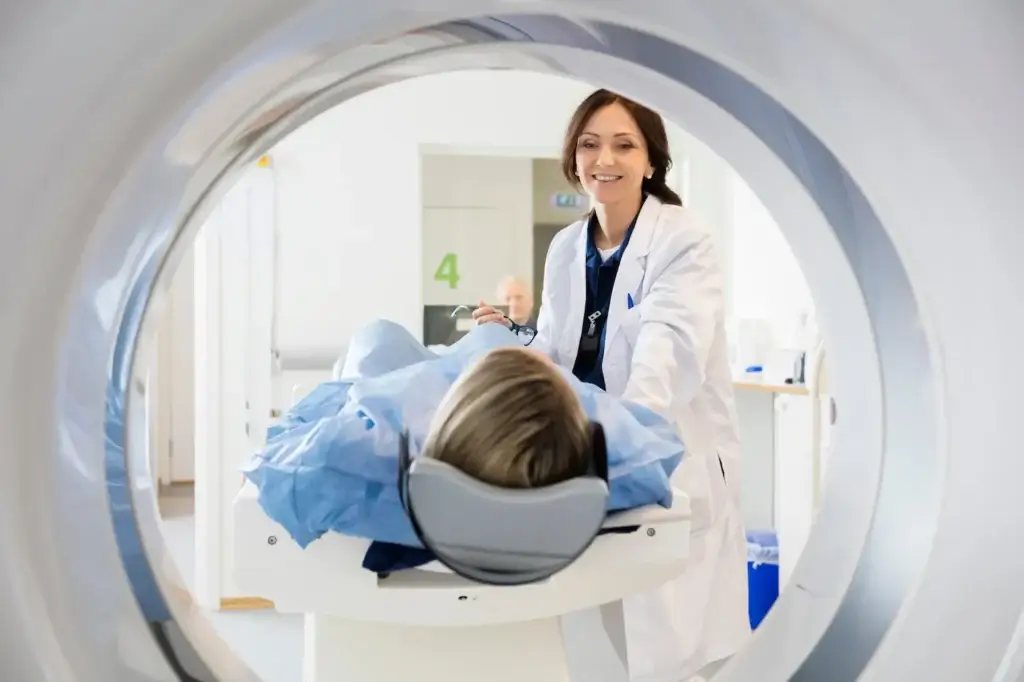Health Hub
Urinary tract infection symptoms in men and women

A urinary tract infection (UTI) is a common urological condition that can affect anyone. For some, symptoms can be mild and easy to miss, but for others, they may become disruptive or painful. Recognising the early signs can make a big difference to your health and comfort.
UTIs can occur in both men and women, though they’re more common in women due to anatomical differences. The earlier you spot symptoms and seek treatment, the more likely you are to avoid complications.
In this guide, we explain what a UTI is, what symptoms to look out for in men and women, and when to seek help. We also cover how symptoms differ between sexes, signs of more serious infections and treatment options.
What is a UTI?
A Urinary tract infection (UTI) is an infection that occurs in any part of the urinary system, including the bladder, kidneys, urethra or ureters.
Most infections affect the lower urinary tract – specifically the bladder (cystitis) and urethra (urethritis). In more severe cases, the infection can spread to the kidneys (pyelonephritis), which requires urgent medical attention.
Symptoms of UTIs in women
UTIscan cause a range of symptoms in women, some of which are immediately noticeable, while others may be more subtle. Understanding what to look for can help you seek early treatment and support a quick recovery.
Burning sensation during urination
One of the most common symptoms of a UTI is a sharp, painful burning sensation while urinating. This feeling can range from mild irritation to intense stinging
The burning typically occurs because the urinary tract becomes inflamed as a result of the infection. This feeling can persist throughout urination and may even linger for a few moments afterwards.
Frequent urge to urinate
Many women feel a strong need to urinate more often – even when the bladder isn’t full.
This urgency is caused by the bladder’s inflammation, which tricks the body into thinking it needs to empty itself constantly.
Cloudy or bloody urine
UTIs can cause urine to become cloudy (a sign that pus or white blood cells are present as the body tries to fight the infection) or cause urine to take on a strong, unpleasant smell.
You might notice that your urine changes colour and looks pink, red or even brown – a sign that there could be blood present. This can feel alarming, especially if it’s the first time you’ve seen it, but it’s often a result of irritation or inflammation in the urinary tract. It’s important to speak with a healthcare professional if you notice this change, even if you don’t have any other symptoms.
Pelvic pain
Pelvic pain is another common symptom in women with UTIs, especially those affecting the bladder (cystitis).
This pain is often described as a dull, aching sensation in the lower abdomen, just above the pubic bone. Some women may feel it as a sense of pressure or discomfort, while others experience sharper, more stabbing pains, or pain that worsens when the bladder is full or during urination.
Vaginal discharge (if applicable)
Some women may notice changes tovaginal discharge during a suspected UTI, though this isn’t a typical symptom.
If you do experience discharge that is unusual in colour, smell or texture, it’s worth discussing with your healthcare provider. Often, this may point to a different condition, such as thrush or bacterial vaginosis, which requires different treatment. In fact, research shows that vaginal discharge is more commonly linked to these vaginal infections than UTIs. Your doctor may carry out further tests to help pinpoint the cause and ensure you receive the right care.
Asymptomatic UTIs
Not all UTIs come with symptoms. In some cases – particularly in older adults or during pregnancy – bacteria may be present without causing noticeable signs. These silent infections still need to be addressed to avoid complications.
Symptoms of UTIs in men
Although UTIs are less common in men due to anatomical differences, they can still happen and may feel different to how they affect women.
Because the male urinary tract is longer, it can take more time for symptoms to appear – and when they do, the infection can be more complicated or uncomfortable.
Burning sensation during urination
Similar to women, a common sign of a UTI in men is a burning or stinging sensation during urination.
This burning is caused by inflammation of the urethra or bladder, and can vary in intensity from mild discomfort to a sharp, painful heat..
Frequent need to urinate, especially at night
Men with UTIs frequently experience an increased urge to urinate, including waking up during the night (nocturia). This frequent urination is the body’s response to the infection irritating the bladder lining.
Despite frequent trips, the bladder often feels unemptied, contributing to restless nights and frequent bathroom visits during the day.
Pain in the lower abdomen or pelvic area
UTI-related pain in men can feel like a dull ache or a sharper, cramping discomfort that becomes more noticeable as the bladder fills.
Men may also feel pressure in the lower pelvic region, sometimes accompanied by discomfort in the rectal area or perineum (the area between the scrotum and anus). This pain can make sitting for long periods uncomfortable and physical activities, such as bending or lifting, may make the feeling worse.
Cloudy or strong-smelling urine
Urine may take on a cloudy appearance or develop a strong, unpleasant odour. These changes in colour and smell are indicators of an infection and shouldn’t be ignored, especially if accompanied by other symptoms like burning or pain.
Pain during ejaculation or sexual activity
In some cases, UTIs may cause discomfort or pain during ejaculation. .
This occurs when the infection irritates the prostate or other parts of the male reproductive system, which are closely connected to the urinary tract. Men may experience sharp pain, a burning sensation or a feeling of pressure during ejaculation.
Because it can feel similar to other conditions, like prostatitis or even a sexually transmitted infection, it’s important to speak to a doctor so they can help work out what’s going on and recommend the right treatment.
Additional symptoms in both men and women
In more serious cases, UTIs can cause ‘systemic symptoms’ – signs that the infection is affecting more than just the urinary tract. These symptoms may point to the infection reaching the kidneys or entering the bloodstream, which needs urgent medical attention.
Look out for:
- Fever, chills or unexplained tiredness
- Nausea or vomiting (feeling sick or being sick)
- Sharp or stabbing pain in your lower back or side (also called flank pain)
If you notice any of these alongside urinary symptoms, seek medical advice as soon as possible.
Sudden loss of bladder control or leaking urine (incontinence) can also affect both men and women. This UTI symptom is more common in older adults and those with pre-existing urinary issues.
While this can happen to both men and women, it’s usually more common in women due to factors like childbirth and menopause. However, men with prostate issues (such as an enlarged prostate) may also experience this symptom.
Why UTI symptoms aren’t always the same for men and women
One of the key differences in UTI symptoms between men and women is related to the anatomy of the urinary tract.
Women have a shorter urethra than men, which means bacteria are more likely to reach the bladder or kidneys and cause an infection. Men’s urethras are much longer, which means bacteria have to travel further to reach the bladder, making UTIs less frequent but potentially more severe if they occur.
Men may also experience symptoms linked to sexual function – such as pain during ejaculation – due to the close link between the urinary and reproductive systems. Nocturia is another common issue, especially if the infection causes prostate inflammation.
When to seek help for UTI symptoms
While some UTIs clear up quickly with treatment, it’s important not to wait if you’re unsure. If you’re experiencing burning when you urinate, pelvic or lower stomach pain, cloudy or smelly urine, or you’re going to the toilet more often than usual, speak to a healthcare professional.
These symptoms may not always mean a UTI, but it’s best to check – especially if they’re new or getting worse. And if you have a fever, nausea or pain in your back or sides, it could be a sign the infection has reached your kidneys and needs urgent treatment.
UTI treatment options
UTIs are usually treated with a short course of antibiotics, which work by killing the bacteria causing the infection. The type and duration of antibiotics depend on the severity of the infection and whether it’s recurrent (keeps coming back).
Alongside antibiotics, pain relief medications such as ibuprofen or paracetamol can help manage discomfort, reducing pain in the bladder or during urination. Drinking plenty of fluids is also important, as it helps flush out bacteria.,
Some people find cranberry products or probiotics helpful, but these should not replace medical treatment.
If you’re looking for practical ways to avoid future infections, there are simple steps you can take to prevent UTIs – from staying hydrated to maintaining personal hygiene.
If you’re dealing with persistent or recurring UTIs, a specialist assessment may help identify the underlying cause and prevent future infections.
If you’re worried about UTI symptoms – whether it’s your first time or something you’ve dealt with before – don’t wait. Book an appointment with one of our specialists at King Edward VII’s Hospital, and let’s work together to get you the care and reassurance you need.
Article Sections
Latest Hospital News
Should you wish to speak to our press team, please visit Press Enquiries




